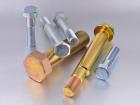The most commonly used in precision casting is investment casting, also known as lost wax casting: using a suitable investment material (such as paraffin) to make a melting mold; repeating the refractory coating and blasting sand on the investment mold, the hardened shell and Drying; then melting the internal melting mold to obtain a cavity; calcining the shell to obtain sufficient strength, and burning off the residual investment material; casting the required metal material; solidifying and cooling, and then sanding after shelling, thereby Get high precision finished products. Heat treatment and cold working and surface treatment according to product requirements. For example, sand casting, mass production of factories should create conditions using technologically advanced modeling and core making methods. The productivity of the old-fashioned shock-type or shock-pressure molding machine production line is not high enough. The labor intensity of the workers is large, the noise is large, and it is not suitable for the requirements of mass production. It should be gradually modified. For small castings, it is possible to use a horizontal or vertical type of boxless high-pressure molding machine production line, real modeling and high production efficiency, and a small footprint; for the middle part, various high-pressure molding machine production lines and gas can be selected. The molding line is designed to meet the requirements of fast and high-precision molding production lines. The core-making method can be used: high-speed core making methods such as cold core box, hot core box and shell core.
Industrial technology mainly involves smelting, casting, forging, welding, heat treatment, physical and chemical testing, etc., supplemented by mechanical processing and computer design knowledge. Most people now know stainless steel precision casting, also known as investment casting wax film casting, the process is widely applicable to a variety of castings, but in the casting process will inevitably encounter a series of problems.
One problem with precision casting: the solution of hammer stuck: In production, the temperature is often measured to avoid the temperature of the hammer and the cylinder being too high; the impurity-free alloy material is used to prevent the impurities from sticking to the hammer.
Two problems in precision casting: it is impossible to hit a dozen molds. It takes a few minutes to continue punching. Look at the highlights on the top of the head. If all parts are gray, the nozzle is clogged. Appropriately increase the nozzle temperature, reduce the nozzle tapping time by 0.1 to 0.2 seconds, and slightly close the fixed mold cooling water.
Three problems of precision casting: solving the problem of easy cracking of thin-wall die-casting products: this problem may be due to material problems or poor mold setting or improper selection of process parameters. Try to control the proportion of waste products not to exceed 30%, and the mold holding time should not be exceeded. The length, and the wall thickness per mm is about 3 seconds, and the ejection delay is not long, generally 0.5-2 seconds.
Four problems in precision casting: the material is too hard, the tool is easy to wear. Solution: Using raw material ratio, no recycling material, using gemstone blade specially made for cemented carbide.
Five problems in precision casting: Black spot solutions for aluminum die castings: reduce the spray concentration to other sprays, or increase the blow time after spraying.
Six problems in precision casting: metal splash solution in the die casting process: reinstall the mold; increase the clamping force, adjust the die casting machine to keep the moving fixed plate parallel; increase the support plate on the moving mold to increase the rigidity of the mold .
Seven problems in precision casting: Flow generation solution after die-casting of die-casting parts: uneven spraying, poor injection of oil, high-speed switching position, or excessive copper ion content in the oxidation bath can cause flow problems, so spraying and Injection oil can be evenly dispersed, not concentrated in local areas, or set at high speed switch positions to reduce shortages. Casting phenomenon.
Eight problems in precision casting: solution for die-casting mold adhesive: check whether the mold temperature is normal, properly reduce the casting temperature and mold temperature of the alloy liquid; check whether the release agent ratio is abnormal, try to replace the release agent; debug the surface of the sprayed part, Carefully polish the nitride mold to prevent damage. The surface nitriding layer forms more viscous phenomena; improves the design structure of the casting system, avoids the continuous erosion of the alloy liquid on the cavity wall or core; modifies the mold cooling system; adjusts the die casting process parameters, appropriately reduces the injection speed, shortens the double Speed trip.


